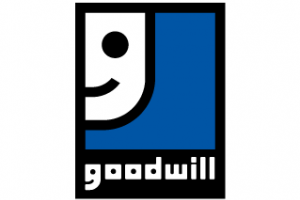Will the person who buys a new home in your community have the disposable cash to become a donor? Testing the idea that new homeowners are responsive, the Salvation Army’s Metropolitan Division received a solid 1.5 percent response to an acquisition mailing this past July.
Such a rate made the traditional Christmas campaign look meek at 0.6 percent. “Last year we had a particularly bad year, pulling in around half the donors we needed for an annual basis,” said Cliff Marshall, associate director for communications for the Salvation Army. The Metropolitan Division covers greater Chicago with parts of Illinois and Indiana. “We wanted to target new homeowners as a way of adding donors during the year.”
Starting in March 2004, Marshall began to rebuild the donor base. Since then, the Salvation Army has mailed approximately 62,000 names or an average of about 10,000 a month. The names are from lists of homeowners within three months of having moved.
Groups need to test the strongest month for mailing, according to Marshall. “The months could vary depending on the organization,” he said. “July could be considered a vacation month, yet that month did well for us.”
The timing depends on the lists of those who move, and people move in the summer. The timing could aid mail programs of organizations that usually find the period slow.
“Nearly one in five people move every year,” said Margot Buckley, vice president of sales in the Stamford, Conn., office of Atlanta-based direct
response agency Grizzard. “These movers want to establish new relationships with local service agencies.” But, while 20 percent of the people move every year, a standard demographic for many decades, the homeowner population is only 12 to 15 percent of that, she said. “The rest are non-homeowners who are moving, and they are not as likely to be receptive,” said Buckley.
One key is that even though most nonprofits know the homeowners who exist in the donor profile, the fact of recency in ownership is not necessarily known.
Grizzard started the new homeowner program with the Salvation Army in 2002, working with some of the divisions. Combined results of the participating divisions produced a response rate of 1.8 percent with a gross revenue of $125,458.25. The average gift was $16.98 and the package price, excluding postage, was $417.55 per 1,000, or roughly 42 cents each.
“We found out these responders are not the typical profile of the organization’s donors,” she said. “They tend to be younger people.”
Many nonprofits have tried to focus on movers as a target, but Buckley warned that the mover element isn’t enough of a qualifier.
Buckley hasn’t broken down the type of home, location or income because she still has to accumulate sufficient volume. “We are working with half of the Salvation Army divisions, dealing with around 20 of 40 divisions,” she said. “That participation has grown 50 percent in the past year, but we still need more for a segmentation.”
The responses fared better in certain parts of the country. While the national average was 1.8 percent, some small communities in Pennsylvania recorded more than 2 percent. However, Georgia tallied 1.5, which is good but still lagging behind.
How does the new homeowner concept compare with other new approaches? “We think it compares favorably if they can get near 2 percent,” she said.
Prospect names will not conflict with any of the donor mailings, according to Buckley. “They are names at new addresses and not on the existing donor base,” she said. “In addition, during the holiday season, these names at their new address would not appear on any of the traditional prospect lists.”
The package differs from the creative used by the Salvation Army for the Christmas acquisition. This welcomes the homeowner, along with offering a front-end premium of name labels. A testimonial from a family who has been helped by the Salvation Army showcases the organization’s mission. Further, the message invites them to join the fight against poverty.
Buckley tested other premium ideas before settling on name labels. The label fits in with a new homeowner theme, she explained. While labels drive up the price, the generated response fares better with the labels.
Grizzard tested the font and label design. “We came up with the design of a series of panels that could be used throughout the year, rather than for one specific season,” Buckley said.
Does the bounce in the response come from the new homeowner concept, or the creative? While Grizzard has not tested the difference, Buckley discovered the new homeowner element stood out in a test when she worked at a different firm.
The recency of owning a home is broken down further. People who moved within the prior two to three months were more receptive than those who moved in four to six months ago.
“An unknown is whether the new homeowner, built on a premium, will renew within the usual rates,” she said. “Usually, these are not as high as non-premium acquisitions.”
However, many nonprofits face challenges to add more new donors throughout the year. “Many clients dealing with an aging donor base could benefit by reaching out to younger donors,” she said. “The consistency of a monthly approach can bring in more than a large seasonal mailing.”
An item like homeownership is a census-like type of data, according to Lawrence Henze, managing director of Blackbaud Analytics, in Littleton, Colo., and Charleston, S.C.
“The census data doesn’t include variables on homeowners so this information comes from other sources,” he said. “Generally, this type of information helps in donor identification and tends to be far more helpful when the nonprofit is in a diverse marketplace rather than a more homogenous one.”
Usually, information from census level data groups people together in ZIP plus 4 categories. This lumping of details can throw off vital differences for marketing people.
Henze explained that certain variables, like income, tend to be consistent in a geographic area. Yet, ages vary in a neighborhood. “You could have a grouping of age, such as four people with ages of 48, 25, 25 and 40, but the information shows as an average of 34.5.” he said. “But in reality you have a gap of 23 years.”
The census can give general indications, but not specific enough for the key questions marketing people face. Age, more than the value of the home, should be looked at first. Whether they own a home and family size are the next pieces of information needed.
Census data also shows shifting pockets of growth. Fast growing counties can be target areas. For example, Nashville is experiencing a return of people to the downtown and urban sections of town. Knowing about that shift aids marketing people for decisions regarding where to hold special events.
However, Henze recognizes the new homeowner factor as an important element. “This is the second level of variables you want to know,” he said. “We have seen new owners tend to be better donors because they get on board quickly, and they also build a stronger relationship the longer they live in a residence.”
The new homeowner concept helps groups that currently avoid much research. “The ZIP plus 4 data can be a step forward because you’re narrowing from nothing to several households at a time,” he said.
An organization that mails during a major season like Christmas and only has one large mailing a year, can pick up individuals from response lists or compiled lists who happen to move to a new address six months earlier.
Henze suggested that the best use of a new homeowner strategy be applied with a national approach. “A Chicago-based organization, for example, would probably have a better result than a rural operation because of the many different types of neighborhoods,” he said.
The Chicago division of the Salvation Army actually tested the homeowner concept previously, although the nonprofit did not adopt it until this year because the Christmas program was successful at that time, said Marshall.
One caveat, “This program’s average gift is smaller,” he said. “The amount is just over $18 compared with Christmas’ acquisition of $37.”
A deciding factor in evaluating the long-range success is the size of the renewal rate. “Right now is too soon to determine that,” Marshall said. “If we keep constant with Christmas’ expectation of 1 percent for acquisition, we’ll be happy.”
Tom Pope, a New York City-based journalist, writes on management issues.












